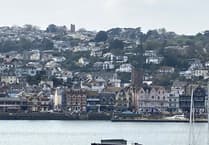Water bosses have been ordered to pay more than £39,000 in fines and costs for polluting the river Dart with crude sewage – provoking contamination fears involving nearby oyster beds.
The pollution incidents at Galmpton Creek happened last year just 600 yards from the oyster beds.
Because of the possible risk of contamination, Brixham Sea Farms Ltd. agreed to shut down their shellfish sales until they were given the all clear by South Hams Council's environmental health experts.
Appearing before Torbay Magistrates last month, South West Water Ltd, of Peninsula House, Rydon Lane, Exeter, was fined a total of £37,000 and ordered to pay £2,365 costs after pleading guilty to three offences under the Environmental Permitting Regulations 2010.
Offences included discharging poisonous, noxious or polluting matter into an inland freshwater and failing to ensure the standby pump at Kiln Road Pumping Station, Galmpton, operated in accordance with the site's permit.
A spokeman for the Environment Agency, which brought the prosecution, said: 'On May 19, 2011, a member of the public reported pollution at Galmpton Quay. An agency officer visited the site and found discoloured water entering a tidal section of the Dart estuary at Galmpton Creek.
The pollution was traced to a sewage pumping station operated by South West Water in Galmpton.
'An inspection of the site revealed that the two pumps were blocked, causing a discharge of crude sewage into the creek via a culvert. Further checks revealed there had been a similar pump blockage four days earlier (May 15) when South West Water staff installed a replacement pump.
'During their visit, staff disconnected the telemetry line to plug in a hand-held phone to overcome the poor mobile signal at the pumping station. Unfortunately, when they left the site they forgot to reconnect the telemetry line.
'On May 17, 2011, the control room at South West Water received an alarm saying there had been a 'total communications failure' at Galmpton. An error by the water company's administration team meant that no visit was made to the site to check whether the pumping station was operating correctly.
'On May 18, the temporary pump failed and this triggered a series of alarms at the site, none of which were picked up by the water company's control room because the telemetry cable was still unplugged.
'Records at the site showed that sewage started to spill from the pumping station on the afternoon of May 18 and that discharges continued intermittently throughout the day and night.
'A shellfishery operated by Brixham Sea Farms Ltd is only around 600 metres from Galmpton Creek. Because of close proximity of the oyster beds and possible risk of contamination, the agency informed South Hams Council's Environmental Health Department.
'Brixham Sea Farms Ltd agreed not to sell any shellfish until they received confirmation the shellfish beds were unaffected by the discharge.
'A sample of shellfish flesh taken on May 19, 2011 was found to contain 'extremely high' levels of E.coli bacteria. The maximum permitted limit is 100 per 100g of flesh. The sample contained 24,000 per 100g. The shellfishery was finally given the 'all clear' on May 27, after a second sample was obtained and found to be within safe limits. There was a second pollution incident at Galmpton on August 20, when once again, untreated sewage was discharged into Galmpton Creek.'
Steve Foot, for the Environment Agency, said: 'These offences resulted from the failure of South West Water to respond appropriately to the loss of communication with one of its pumping stations.
'There were clear indications of problems at the site, yet the water company failed to act. This resulted in illegal discharges of sewage into the Dart estuary.'



